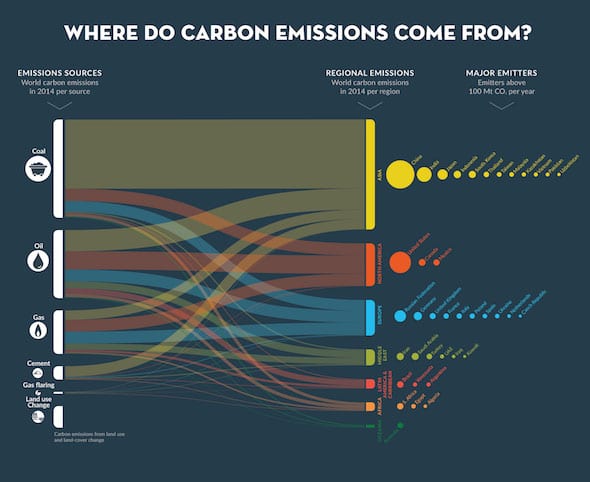A group of the world’s top climate scientists have warned against complacency on greenhouse gas emissions reductions – particularly from fossil fuels and industry – after the latest data from the Global Carbon Project found emissions set to grow by 2 per cent for the year.
The rise in emissions – coming after three years of plateaued growth – has been linked to the projected 8.5 per cent increase in China’s emissions, coming off the back of higher energy demand, and lower than average hydro output.
The United States and Europe, the world’s second and third top emitters, continued their decade-long decline in emissions, but at a reduced pace in 2017, the report found.
And in Australia – where greenhouse gas emissions have been steadily rising since 2013 – emissions this year have been relatively flat, but not due to any long-term policy action or electricity scetor transformations.
According to Professor Frank Jotzo, who is director of the Centre for Climate Economics and Policy, at the Crawford School of Public Policy, ANU, the lower growth in Australia is largely due to a roughly 4 per cent reduction from the electricity sector – a dip almost entirely attributable to the closure of the Hazelwood coal-fired power plant in Victoria in late March.
“So we are getting an effect from that,” said Jotzo during the media briefing on Monday, “but that is a one off.
“And now the political debate (in Australia) very much around… how could we avoid further (coal plant) closures,” he added. “And that’s not what we want.”
Rather, what scientists are hoping for is an actual decline in global emissions.
“To stabilise our climate at well below 2℃ of global warming, the elusive peak in global emissions needs to be reached as soon as possible, before quickly setting into motion the great decline in emissions needed to reach zero net emissions by around 2050,” scientists wrote in The Conversation on Tuesday.
In this context, the 2017 record high of 37 billion tonnes of CO2 looked like “a very significant resumption of (emissions) growth,” said the GCP’s executive director, from Australia’s CSIRO, Pep Canadell.
But Canadell also stressed that the 2017 result should be viewed against the backdrop of the past three years, where the global economy had been decarbonising, even while major economies continue to grow.
“The strong trend is of emissions going down, while GDP is going up,” he told the briefing.
“We don’t want to make a big deal of this year’s result, but it is nevertheless the opposite of what we would like to see happening.”
“(Carbon) budgets are very small,” said Canadell on Monday. “Budgets will run out. “And the penalty for slacking off will come so quickly, so high…”












